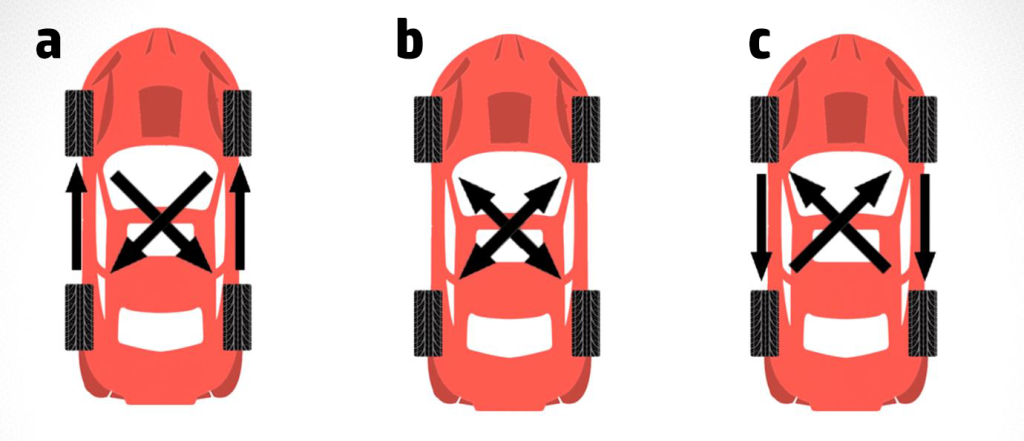Tire Rotations – Why Are They Necessary?
Tire rotations are among the types of vehicle maintenance many people hear about but don’t fully understand. When performed regularly, tire rotations are a great way to prolong the life of your tires. Not only are tire rotations extremely simple, but they can be performed with other regular maintenance such as oil changes and tire changeovers. In this guide we will discuss what tire rotations are and why they are needed.
What are tire rotations?
Tire rotations can be explained very simply – rotating the tires on your vehicle to ensure a more even tread wear among your set. During a tire rotation, the technician will rotate your tires in various patterns (determined by the type of wear, your drive train, and a number of other factors), as visualized below. Tire rotations should be completed approximately every 8,000 km but this may vary depending on the type of tires you have, the condition of your vehicle, and the type of driver you are.
This nearly always includes moving rear tires to the front and vice versa, as well as swapping which side of the vehicle the tire is mounted.

What causes tread to wear unevenly?
Tread can wear unevenly for a number of reasons, both simple and complex. The most common reason is that the tires on your drive axle are responsible for delivering power from your drive train, or “driving” your vehicle – and as such will wear quicker. For example, a front-wheel drive vehicle will typically show greater wear on the front tires vs the rear. All-wheel drive and 4×4 vehicles are not exempt from this, as the set of tires mounted nearest to the transfer case will be doing more work than the others. Another common reason is steer-axle tires (front tires in most vehicles) are subject to constant scrubbing and side forces as you steer and make directional corrections while driving.
Aside from the regular operation of the vehicle, your tires may wear unevenly due to other mechanical faults. Many vehicles regularly fall out of their specified wheel alignments or are subject to more frequent front-end wear (suspension components), especially vehicles that are front-end heavy. As your suspension begins to wear, or your alignment falls out of specifications, you will experience uneven wear on your tires. Although these reasons should be addressed, regular tire rotations ensure that no specific tires bear the brunt of these issues.
RELATED RESOURCES:
New tires and tire warranties
It’s important to note that some tire manufacturers have warranties conditional on you performing regular tire rotations. Always be sure that you review your tire warranty when purchasing a new set of tires.
If your vehicle’s tires do wear unevenly due to not rotating your tires, you may be tempted to replace only the tires that are worn. It is important that any time you purchase new tires for your vehicle, you purchase a matching set of four (unless your mechanic advises otherwise). If your tire treads vary, it will affect maneuverability and braking consistency.

